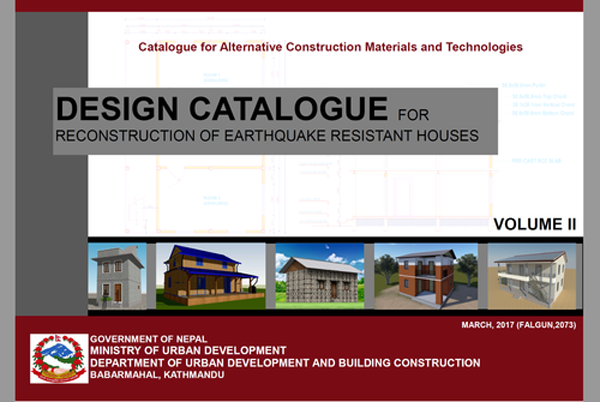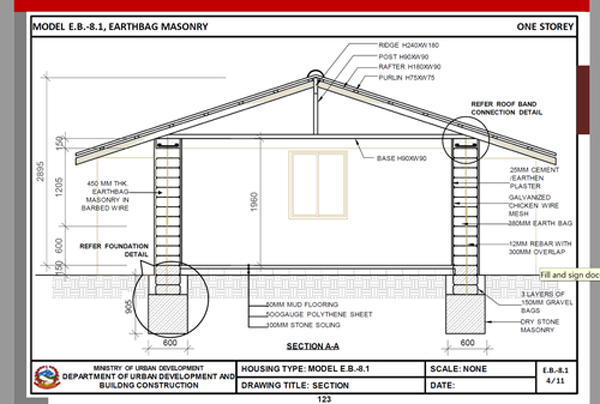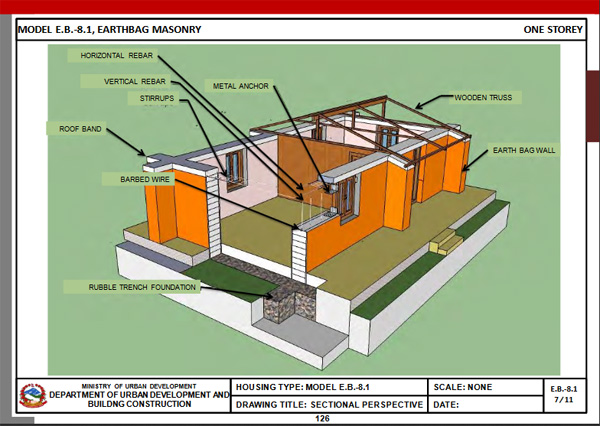
“Good Earth Nepal has achieved a huge BREAKTHROUGH! One and a half years of lobbying and multiple presentations to government engineering and technical boards have resulted in the APPROVAL and PUBLICATION of our Earthbag Design and protocols by Nepal’s Department of Urban Development and Building Construction (DUDBC).

The DUDBC’s publication of our design and protocols in the Design Catalog for Reconstruction of Earthquake Resistant Houses, Volume II, marks the first time a sovereign country (population 28,000,000) officially approves Earthbag construction as a standard and recommended building method at the federal level.
The Catalog will be distributed to 3000 Nepal Reconstruction Authority engineers, and our Earthbag design will be offered as an option to millions of victims given government aid ($3,000) to rebuild.”
You can download the catalog from the Good Earth Nepal website.


Woow congratulation. good things comes those who wait. I take my hat of to you and your team.
Thanks.
Congrats Owen !
Hope this will start the ball rolling in other regions
Thanks.
New milestone in alternative technology.Great great achievement.Congratulations to Mr Owen and team.
Thank you Ram. And thanks for your willingness to do further earthbag research. I believe we will see a lot more projects in Nepal and India soon, and we need engineers for this work.
This is an extremely important step. Congratulation for the determination. All the earthbag community and all the people that are fighting with their authorities in order to legitimize this technique will surely benefit from this. I am trying to do this in Italy and it is quite frustrating. I feel more optimistic now. Good job guys.
Print out the cover of the report plus the relevant pages and give them a copy. The engineering and analysis has been done now in great detail. There are 50+ surviving buildings that had little or no structural damage. Dozens of buildings have been built since. And there’s a large body of technical information now compiled by various researchers around the world on the Testing page at Earthbag Building.com (our main site).
Good job!
Congratulations Owen and team!
Thank you very much. This is a highlight of my career. We’re basically all stunned.
Kudos to the people who made this happen! Great great work!
Thanks Ben. This was a battle of persistence.
We’re sort of in a state of shock right now at this news. It’s been a long, frustrating journey to get code approval. The main credit goes to the hard work and persistence of the Good Earth Nepal staff. Please support the good folks at Good Earth Nepal that funded and organized this project. This is arthbag/natural building history in the making. We expect more countries to follow suit, and many more NGOs to start funding earthbag projects.
Also want to say great job to all the gov workers who put this document together. It is extremely difficult to engineer pioneering building methods. The amount of work behind the scenes that was required is staggering. We saw the work that went into the earthbag proposal. They had to deal with 17 different building methods! Realize, what’s in the final document is just the tip of the iceberg. All the engineering calculations and documentation is much more voluminous. No wonder it took so long.
So exciting for earth building! You said it, a TREMENDOUS step forward for earthbag building. It’s great to hear that the persistence has paid off with Good Earth Nepal. I am going to be pushing earthbag building through Honduras in the next 12 months and have strong feelings about it gaining some momentum there. Keep up the great work!
The 50+ surviving earthbag buildings that endured the quakes really pushed the whole code process along also. This fact was like an elephant in the room that couldn’t be ignored. And now I believe we’ll start to see other countries follow suit. Sure, a shake table test would provide useful data, but 50 some buildings that withstood two quakes and numerous tremors is VERY compelling evidence, especially when the surrounding concrete, brick and mortar buildings failed. Similar things have happened elsewhere such as Haiti, Turkey, etc.